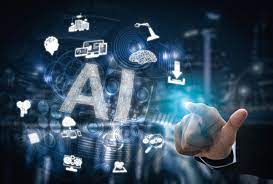As the world welcomes innovative technologies, they could spur a sharp spike in energy consumption if not regulated appropriately. A wide range of industries, including the energy sector, is looking to artificial intelligence (AI) to modernize operations. However, many are not considering the potential energy costs of adopting AI and other innovative technologies. Just as we’ve seen with cryptocurrency mining, the use of new, advanced technologies is expected to significantly drive up energy usage across different industries, and a lack of management could lead to disaster.
There have been great advances in AI technology in recent years, leading many companies to adopt the technology and many individuals to gain a better understanding of it. It is quickly becoming an essential tool in everyday life, as it is used for a range of activities that we may not even consider. Checking into a flight, conducting a Google search, or using cruise control all rely on AI. For companies, the use of AI technology can optimize operations through smart decision-making and automation. It minimizes human error and typically drives up efficiency. It’s for this reason that so many companies are investing in the technology.
Each online interaction requires the use of remote servers – machines in data centers that use electricity to carry out operations. At present, data centers worldwide account for between 1 and 1.5 percent of the world’s electricity use, according to the International Energy Agency. While this figure may seem fairly low, the rapid rollout of new technologies, such as AI, is expected to drive up the sector’s energy usage significantly. There have been increasing discussions in the academic world around the high energy needs of AI, but this will have to quickly translate into national policy if we hope to manage future energy use in the sector.
An analysis published in October showed that the Nvidia Corporation – a multinational technology company, will be shipping around 1.5 million AI server units a year by 2027, which, when running, could equate to the annual use of 85.4 terawatt-hours of electricity. This is higher than the total electricity use of several small countries. Companies such as Nvidia now use advanced graphics processing units (GPUs) rather than simpler processors, called CPUs, to power operations, which require more energy to power. Brady Brim-Deforest, the CEO of Formula Monks, stated, “For the next decade, GPUs are going to be the core of AI infrastructure. And GPUs consume 10 to 15 times the amount of power per processing cycle than CPUs do. They’re very energy intensive.”
One of the technologies to take off in recent months is OpenAI’s ChatGPT, a chatbot that can conduct a humanlike conversation, respond to questions, and create written content. A recent paper from the University of Washington showed that hundreds of millions of queries on ChatGPT can cost around 1 gigawatt-hour a day, equivalent to the energy consumption of 33,000 U.S. households. A professor of electrical and computer engineering at Washington, Sajjad Moazeni, explained “The energy consumption of something like ChatGPT inquiry compared to some inquiry on your email, for example, is going to be probably 10 to 100 times more power hungry.”
Industry experts expect the individual and industry use of AI to increase significantly in the coming years. We are at just one percent of where AI adoption is expected to be within the next two to three years. This means that governments must prepare their countries now to ensure the spike in energy use from advanced technologies is controlled early on.
While this seems like a negative outlook for AI and other innovative technologies, there are many plus sides to using advanced tech. Although energy use is high, these types of machines are typically much more efficient than humans, contributing to improved productivity and fewer human errors.
In Europe, the EU’s AI Act recognizes that AI systems will likely have a high energy consumption during their lifecycle. The legislation categorizes AI systems, setting out requirements for so-called “high-risk AI systems”. They must be designed and developed with logging capabilities that can record energy consumption, the measurement or calculation of resource use, and the environmental impact throughout the system’s lifecycle. At present, there are no regulations in place to reduce the energy consumption of AI technologies in the EU, rather, the European Parliament focuses on transparency and gaining a better understanding of the energy use of the advanced technology.
The adoption of AI technology, and other advanced tech, is happening rapidly and is expected to soar in the coming years. While this could dramatically boost operational efficiency across a range of industries, it is also expected to drive up energy consumption. The EU has taken a step in the right direction by encouraging greater transparency in AI, but governments worldwide must now consider introducing regulations to reduce unnecessary energy waste in advanced technologies.

 Iran Energy News Oil, Gas, Petrochemical and Energy Field Specialized Channel
Iran Energy News Oil, Gas, Petrochemical and Energy Field Specialized Channel



